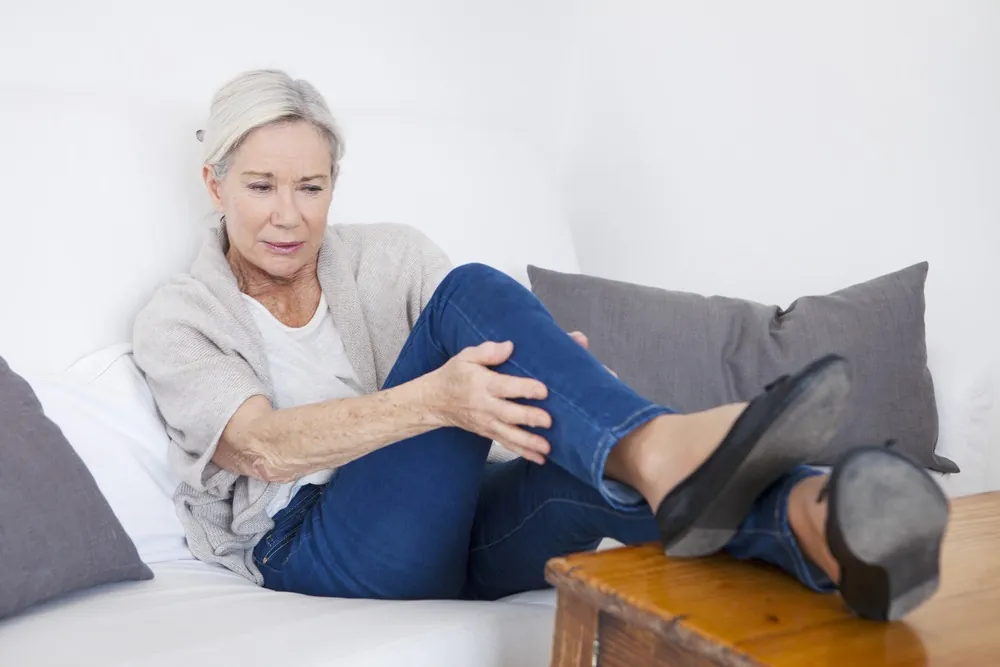Suffering from foot, ankle, leg, hip and/or lower back pain?
Did you know that this type of pain is often related to unbalanced feet and legs?
Foot pain
Foot pain is very common, and often localized in the heel. The most common heel pain is plantar fasciitis. The forefoot is also often a source of pain. This pain is usually located on the soles of the feet just behind the toes. The term “metatarsalgia” encompasses the majority of these pains, which can then be more specifically classified according to the area affected and the source of pain or discomfort. Morton’s neuroma, hallux abducto valgus (foot bunion) and hammer toes are some of the most common disorders of the forefoot. The condition that affects the top and central portion of the foot often results from osteoarthritis. This osteoarthritis is normally the wearing down of the joints caused by a misalignment of the foot.
Ankle pain
Ankle pain can be caused by an old injury such as an improperly healed sprain or fracture and/or a functional foot problem. The onset of pain can be either sudden, following a sprain or a strain caused by an improper movement, or very gradual, which is often the case with a functional foot imbalance that slowly impedes movement and limits your everyday activities.
Whatever the cause, your podiatrist can help you. There are various treatment methods, ranging from physical therapy, therapeutic wraps or a prescription for a plantar orthosis tailored to your needs. Our podiatrists can help you select the best therapeutic solutions.
Leg pain
It is not normal to have leg pain, whether you are a child or an adult. If your leg pain worsens as a result of activities such as walking, running, skiing, etc., it is recommended that you consult a podiatrist to perform a complete analysis of your gait and your feet. With this comprehensive assessment, we will be able to establish a treatment plan and inform you about short- and long-term goals.
If we feel that we cannot help you, we will refer you to a health professional who specializes in your problem. Know that we are able to direct you to the right specialist, whether your pain is neurological, vascular or structural.
Knee pain
Knee pain is more common among young girls, and tends to be aggravated by sports activities. Treatment is normally effective in reducing and removing pain. In addition, symptoms of knee pain are often associated with some form of misalignment. For example, the genu valgum (knock knees) can be realigned with treatment at a very young age, and even corrected in some cases.
In adult patients knee pain is normally related to poor joint placement. This creates uneven wear on the joints and promotes arthritis. Although we do not treat knee osteoarthritis directly, we can improve the knee alignment via the foot. Your symptoms and the progress of your pathology are thus reduced. If your knees are too worn and your symptoms cannot be alleviated by our treatment methods, we will recommend a specialist to assist you.
Hip pain
Osteoarthritis of the hip is a common cause of hip pain. It can be eased and sometimes even completely eliminated through appropriate podiatric intervention. Depending on your condition and symptoms, we can offer a treatment plan with realistic objectives that will fit your lifestyle. In most cases, our treatments can allow you to delay hip replacement surgery (depending on your hip’s condition). But the primary goal of our treatments is to make you more functional and to minimize your pain.
In addition, our postural imagery can help podiatrists detect postural asymmetry that may be the source of your pain. You will benefit from a more precise adjustment treatment and better correlation between your symptoms and postural condition.
Lower back pain
Many lower back pain issues can be relieved or even completely cured with podiatric treatments. Often an imbalance in the foot will affect your lower back. If standing, walking or running aggravates your symptoms An assessment is recommended if you experience symptoms while standing walking or running. Flat feet are often at the root of lower back problems, but other foot issues can also be the source. By controlling and stabilizing unwanted lateral leg movement many patients see their condition improve and their pain subside.

